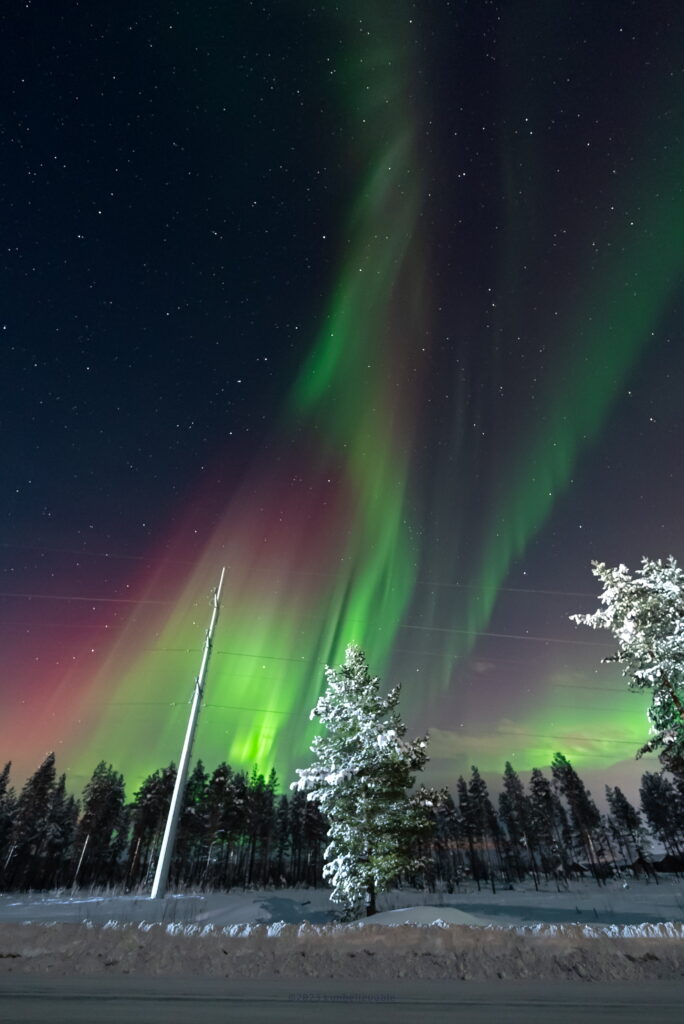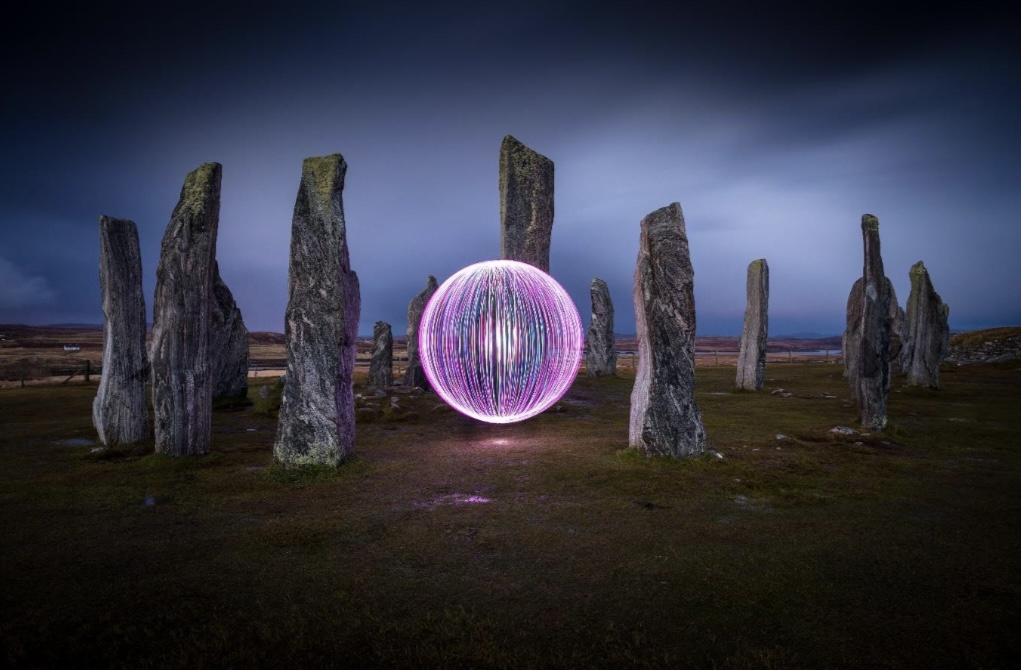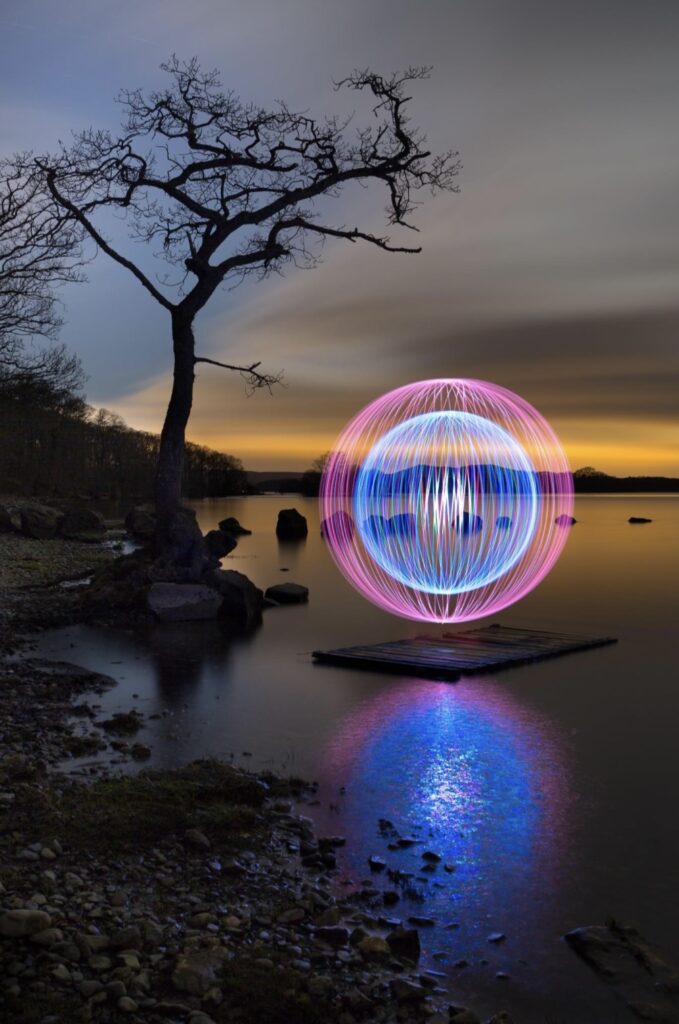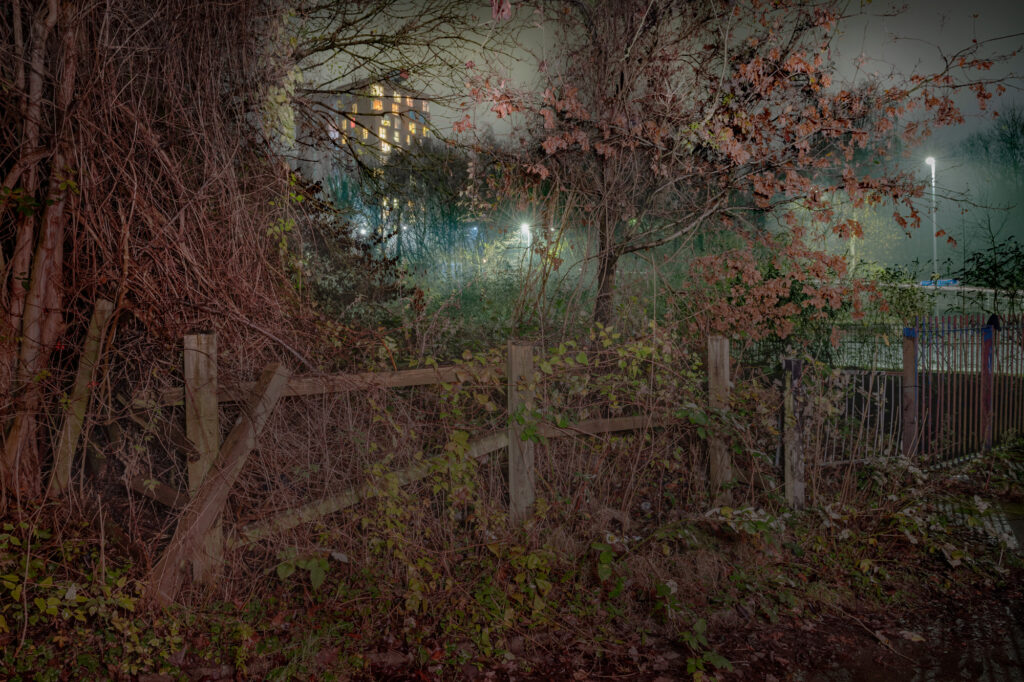While most of us are sleeping in our beds, there’s a group of people busy getting creative throughout the night. We meet three artists who explain why the moonlight gets their artistic juices flowing.
Kun Song
Photographer Kun Song, 32, from Seoul, South Korea, lives in Rovaniemi, Finland. He works as a guide, showing tourists the northern lights in some of the best spots in Scandinavia.
The northern lights, also known as aurora, are dazzling natural light displays caused by a disturbance in the magnetosphere caused by solar wind. They are best seen in Scandinavian night skies.

Photographer Kun Song describes himself as an ‘aurora hunting tour guide’ capturing the experience on film for international visitors, allowing them to take their experience home. It was only seven years ago when he moved to Finland for university that he began to learn about the northern lights with his friends. He later became a photographer for a tour company and now runs his own, Nordies Tour.
Kun takes international travellers on trips across Sweden, Finland and Norway. The trip location is decided on the day, as it all depends on weather. “I read solar wind graphs and cloud movement before the tour so I can maximise seeing the lights,” he says, explaining it’s important to be at the right spot at the right moment, in order to experience the brightest and longest lights.
The northern lights form high up in the sky, and clouds can often shield the lights from view. This is why on some days he may even travel into Sweden, in order to avoid the cloud coverage.
The duration of Kun’s working night depends on the season and weather. During working hours, he adapts to a nocturnal sleeping pattern. He sleeps through the day, then sets himself up with a cup of coffee before he starts his shift, which can often last up to 11 hours. “It doesn’t feel like night anymore, as my cycle has completely changed,” he says. Overseeing people during that time of day in the wilderness requires him to be even more cautious in the snowy Finnish surroundings, which can pose some dangers.
Most of us trust the weather apps on our phones to tell us the up-coming forecast, however, imagine this on a much larger scale when customers and hundreds of kilometres are at stake. “The settings I use really depend on the day, the weather and especially the moonlight.” Kun continued by describing the moon as very low in Finland, “the shutter speed depends on the moonlight, people’s skin tone and the clothes they are wearing.” Kun is unable to define certain settings due to the moon and city light constantly changing. He recommends wearing white clothes as it means visitors will be visible in the photos, while enhancing the scenic northern lights in the background.
Some of the most memorable nights for Kun are when he experiences some of the most extreme conditions. “One night it was pretty foggy because of unstable temperatures, even though the Lapland area is very flat,” he says. “I had to find somewhere that was higher than average. Even yesterday I had to hike with a family with a child for around 15 minutes in the snow. It was a challenging moment, but there are many different things I learn every day because it is my first season.”
But it’s not just the lights that stand out for Kun. Often memorable moments are in the form of marriage proposals that could be fresh from a rom-com movie. The one thing he asks of visitors is that they tell him in advance as yes, it’s often a surprise for him too!
“They never tell me in advance so it’s something surprising for me and the girls,” he says, acknowledging that this can make capturing the special moment quite tricky. Although he always feels extremely honoured that people are trusting him with such a personal and important moment of their lives.
Another of Kun’s favourite parts of the job is the fact that he gets to witness the admiration for his work. “I love to see people smiling in my photos and shouting out of joy in videos when they see the crazy auroras.”
The temperamental lighting of the moon can either make or break the perfect image when capturing the northern lights. A dimmer moonlight is preferred. If it is too bright, and accompanied by the aurora when it is not at its strongest, it becomes difficult to see them with the naked eye. Kun recalls one of his most successful nights of capturing the lights, when the heaviest aurora lights hit the city – “It lasted so long, I was almost getting sick of it. when I came back home, the northern lights were still out there!” he laughs.

Using a Sony Alpha 7S3 to ensure the highest quality photos, travelling up to 400 km for the perfect view of the northern lights and religiously checking the weather and cloud movement is a regular day of work for Kun. There aren’t many things Kun won’t do to provide his visitors with the perfect photos, capturing a memory that will last a lifetime.
Instagram @kunbelievable
Tik Tok @nordies_tour
David Gilliver
Light Painter David Gilliver , 43, from Scotland, is a light and miniature figurine artist working predominantly in Scotland and Guernsey. Nox spoke to him about his experience as a light painter.
David Gilliver describes himself as a light painting and miniature figurine (also known as ‘Little People’) artist. Since studying fine art photography at Glasgow Art School, he has gone on to become one of the world’s leading light artists and micro photographers.
Light painting – the practice of a light artist – is used to describe an image created by ‘drawing’ or ‘painting’ with a moving light and capturing it on camera, whilst using long exposure. David compares it to capturing moving cars at night.

Light painting requires dark conditions, which is why David works at night time. “I walk into the scene being captured and by carefully moving around portable light devices, you can create shapes and sculptures that are frozen into the space. If you wear dark clothing, and continually move around, you will remain invisible and leave behind the trail of light.”
For David, living in Guernsey was vital for his development as a light artist. Discovering the art form when he was working in finance on the island, he describes making the work as pretty straight forward. “Making the work outdoors at night time was pretty straight forward in the sense that it was both relatively safe to do so and because it was a small island it was quite a practical place to get around, so I could go to different beaches at fairly short notice when the conditions felt right,” he says.

It’s so magical, it shouldn’t be tampered with
For some, the thought of working outdoors at night might be daunting. However, for David, he finds the practice therapeutic. “I teach my own workshops, and I always try to convey this to my attendees, it’s an incredibly calming, and therapeutic process”.
He explains how he’s worked with many people over the years who have suffered from depression and have used light painting as an outlet. Light painting, David feels, is magical: “There’s something about the process, that is not only magical in terms of the visual nature of it, but the making of the work is so physically involving. It’s so magical, it shouldn’t be tampered with.”

The joy that light painting brings to others during the process keeps David motivated, and it also helps that he has amassed one of the biggest light painting tool collections in the world. From professional lights to fingertip LEDs, it’s all about playing around and discovering what works best for light painting. David often creates many of his photographs with the more simple tools, such as basic garden lights.
One trip that was particularly significant for David was his excursion to the Isle of Lewis at the very tip of Northwest Scotland.
“I spent a day and a half travelling away to this remote location specifically to make some work between some standing stones in the middle of nowhere,” he says. Travelling by car for this project was unlike any of David’s usual working nights. He was unable to predict the weather, because of the advanced planning the trip required.

For many the unpredictability would be some sort of nightmare, however, for people like David, it’s simply part of the job.
“The weather was pretty disastrous, but I still managed to make three images in the middle of the standing stones,” he says, although the hail and wind meant he was stood cowering next to a thousand-year-old stones waiting for the extreme weather to stop before he could take a shot. “When the weather relented, I would try and make another piece of work and I managed to make three or four images.”
Sometimes the harder it is, the more satisfying David finds his work, “The effort we had to go to was quite frustrating at the time, but looking back it made it all the more memorable.”
David has recently worked on a project called Noor Riyahd festival of light in which he light painted around Guernsey and Scotland and sent the photos to be edited onto global landmarks, an unusual practice for light painters as they highly value authentic work.
Simon Buckley
Simon Buckley is a Manchester-based photographer with a preference for architectural work. Describing himself as a documentary artist, recording the world around him to tell stories, he focuses on the world after dusk and before dawn.
Simon’s interest in night time photography sparked on a walk close to Angel Meadow, the core of Manchester’s industrial past. Previously a Victorian slum, Angel Meadow is now a burial ground with up to 40,000 bodies below ground.

Standing on the gravestones as the luminous Co-op light falls over the flagstones, Simon describes a light crystallising in his mind: “If by magic this light could bring back the souls of these Mancunian ancestors, what would they think of the city we’d created today?” he asked himself.
For Simon, dawn is a metaphor from old to new and matches his own journey. He explains that his Not Quite Light project came from heartbreak – ultimately Simon asked himself “who would I become as I moved on from my old life?” A long marriage had ended very painfully, and I was trying to survive.”
“She’d entirely disappeared, as if she’d been a ghost.”
One of Simon’s most memorable nights was one in Ardwick, Manchester. Encountering someone he described as being in a state of paranoia the person recruited two more people to help chase Simon down. They eventually caught him and pinned him up against a wall. “In the moment, I thought I was going to be stabbed or beaten to death, but the guy simply wanted to scream in my face,” says Simon, describing the terrifying event. Although he says it was the only truly bad thing that happened in the seven years of doing his Not Quite Light Project.
But it was another more eery event that has really stuck in Simon’s mind. Taking place one May morning at around 4:30AM, Simon describes seeing an elderly woman walking slowly down the street towards him. “Using her stroller shopping trolley for support, she came to sit near me, and we had a brief chat,” he says. “She said she’d been working a shift and had missed her bus home.” After a few minutes she set off again, at the same measured pace along the straight road. “I went back to my camera, looked up to see if she was ok, and she’d entirely disappeared, as if she’d been a ghost,” says Simon.
Despite this spooky encounter, Simon describes how he adores the peace of a city before the hustle and bustle that begins as the city comes to life after 5AM during summer months.
“I love the peace of the city, and the birdsong,” he says. “Lockdown wasn’t a shock to me, the empty streets were something I was used to from being out at 4am. I love that the city is then like a giant (quiet) film set.
The inner animal comes alive
The twilight is a time of sensory sensitivity, Simon explains. “The inner animal comes alive. Sounds are enhanced, the atmosphere is changed, our eyes are constantly scanning the shadows.”
“I often think, when I’m out before first light, that I’ve stepped through the back of a wardrobe, that the city is enchanted and anything is possible,” he says. “The night, the dark, brings fear, but also magic. I love the pools of light, the transformation of buildings as they are defined by shadow and streetlight, the absence of people so the streets become the star attractions, not the humans.”
Simon recognises the buildings will last beyond human life span, for him it is “their time”: “we can really see what people have created. These constructions have a solidity, personality and purpose perhaps beyond what was originally envisioned. This comes alive at night.”